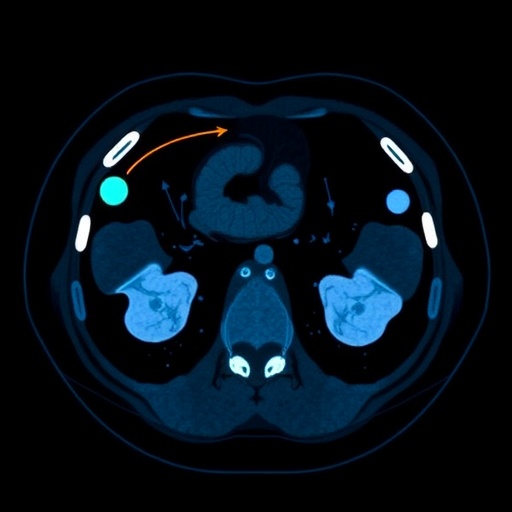The utilization of computed tomography (CT) scans in modern medicine has ignited a considerable debate regarding their benefits against the potential long-term health risks associated with radiation exposure. A new study from the University of California, San Francisco has shed light on the alarming statistic that these scans may be responsible for up to 5% of all cancer cases annually in the United States. This estimate raises vital questions about the implications of widespread imaging practices, particularly in populations more vulnerable to radiation.
CT scans are instrumental in diagnosing a range of medical conditions, from tumors to internal injuries, and their accuracy and speed often make them the preferred choice for physicians. However, the study emphasizes the invisible threat posed by the ionizing radiation that is inherent to CT imaging, a recognized carcinogen. With nearly 93 million scans performed in the USA in 2023, the projection of about 103,000 new cancers attributable to these procedures looms large over public health considerations.
The risks associated with radiation exposure are markedly heightened among children and infants, who have developing tissues that are more susceptible to the effects of radiation. The research indicates that infants are ten times more likely to develop cancer later in life as a result of a CT scan compared to older patients. Children under the age of 18 accounted for 4.2% of the scans performed, leading to serious concerns about whether such imaging strategies are judicious or necessary for this young demographic.
The study, which received funding from the National Institutes of Health (NIH), seeks to underscore the urgent need for reassessing the protocols governing CT scan usage. Researchers found that a staggering number of scans, particularly those performed for conditions like upper respiratory infections or headaches without serious underlying symptoms, could be deemed unnecessary. The inadvertent overuse of CT imaging could lead to a public health crisis where the very tool intended to diagnose and save lives contributes to a significant rise in cancer cases.
Adult demographics displayed concerning trends as well, with the highest projected cancer instances identified in individuals aged 50 to 59. The most common forms of cancer resulting from these scans included lung, colon, leukemia, bladder, and breast cancers. By analyzing the data from a substantial sample of 61.5 million patients, the researchers gathered insights that could lead to improved decision-making in clinical practice.
Further examination revealed that most cancers resulting from CT scans among infants and children were thyroid, lung, and breast cancers, underscoring the need for careful consideration before exposing this vulnerable population to such diagnostic procedures. Specific CT exams, notably those targeting the abdomen and pelvis for adults and the head for children, were highlighted as having the greatest cancer risk. The significant number of lifetime cancers projected by this study parallels other well-known risk factors, such as excess alcohol consumption and high body mass index.
Interestingly, variations in the doses of radiation administered during CT scans have posed critical ethical questions about patient safety. According to the findings, disparities in the radiation dosage can lead to patients receiving doses that far exceed what is considered safe, compounding the overall cancer risk. The researchers advocate for standardized protocols that ensure all patients receive the lowest possible dose while still achieving the requisite diagnostic outcome.
CT imaging is essential yet continues to evoke scrutiny regarding its potential harms, particularly long-term cancer risks. The study’s co-authors emphasize that effective communication of these risks to patients and their families is critical. Families often lack the necessary information to make informed decisions based on the benefits and risks associated with each CT exam. There is a call to action for clinicians to enhance their discussions with patients regarding the potential ramifications of frequent imaging.
With the knowledge that decreasing CT usage and optimizing radiation doses could potentially avert many cancers, there is a fervent appeal for transformative change within healthcare practices. Policymakers and healthcare providers are urged to prioritize patient-centered approaches that consider the risks of radiation exposure alongside the diagnostic benefits of CT scans. The awareness generated by the UC San Francisco study may serve as a catalyst for altering the prevailing norms that currently govern imaging practices.
In summary, as the study delineates the troubling intersection of CT scan usage and increasing cancer cases, it opens the door for critical dialogues about best practices in imaging. The balance between effectively diagnosing conditions and safeguarding the health of patients moves to the forefront of medical discourse. As the findings ripple through the medical community, they potentially reshape how practitioners approach the utilization of CT scans, ensuring that patient safety remains paramount.
Subject of Research: The association between CT scans and the incidence of cancer cases.
Article Title: Popular CT Scans Could Account for 5% of All Cancer Cases A Year
News Publication Date: April 14, 2023
Web References: UC San Francisco
References: The study published in JAMA Internal Medicine.
Image Credits: JAMA Internal Medicine
Keywords: CT scans, cancer risk, ionizing radiation, pediatrics, public health, imaging practices, overuse of medical imaging, cancer prevention, healthcare policies.




